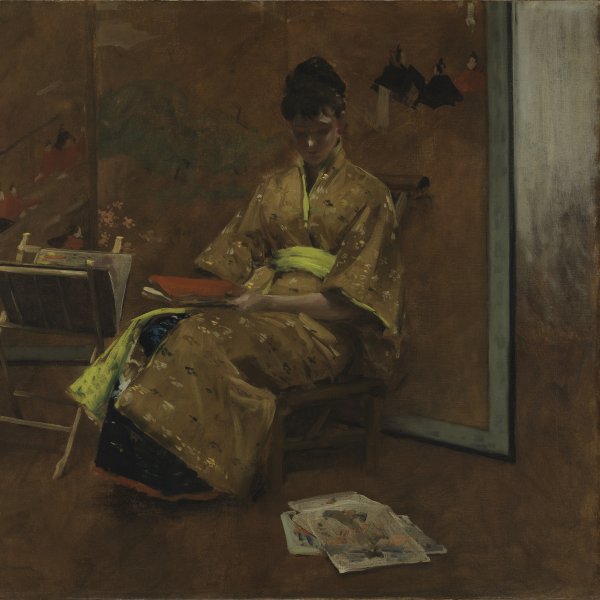Pink and Gold: The Neapolitan
ca. 1897
Oil on canvas.
50 x 31 cm
Museo Nacional Thyssen-Bornemisza, Madrid
Inv. no.
784
(1982.28
)
ROOM 33
Level 1
Permanent Collection
Carmen Rossi, the sitter of this small portrait, was an Italian girl who posed for Whistler as a child and later, during the 1890s, became his favourite model. In addition to being portrayed in the Museo Thyssen-Bornemisza painting, the young women is also depicted in Crimson note: Carmen and Harmony in Rose and Green: Carmen. As can be inferred from the titles, Whistler subordinated the model’s personality to compositional and chromatic effects. In the case of Rose et or: La Napolitaine, the title is taken from the young woman’s gold choker and the rose-hued dress or the reddish-gold of the frame, which was designed by Whistler himself. The artist, who conceived his work in terms of decorative effect and visual impact, wrote in this connection, “A beautiful picture should be shown beautifully [...] it must be hung so it can be seen, with plenty of wall-space around it in a room made beautiful by colour, by sculpture judiciously placed, by furniture and decorations and hangings in harmony.”
It was precisely Whistler who helped this Neapolitan woman organise the opening of the Académie Carmen in the passage Stanislas, in Paris, in 1898. The painter taught at this art school, which remained active until 1901, alongside the sculptor Frederick MacMonnies and his presence attracted numerous American and English students such as Carl Frieseke, Gwen John, Inez Bate and Clifford Addams.
Paloma Alarcó
It was precisely Whistler who helped this Neapolitan woman organise the opening of the Académie Carmen in the passage Stanislas, in Paris, in 1898. The painter taught at this art school, which remained active until 1901, alongside the sculptor Frederick MacMonnies and his presence attracted numerous American and English students such as Carl Frieseke, Gwen John, Inez Bate and Clifford Addams.
Paloma Alarcó









